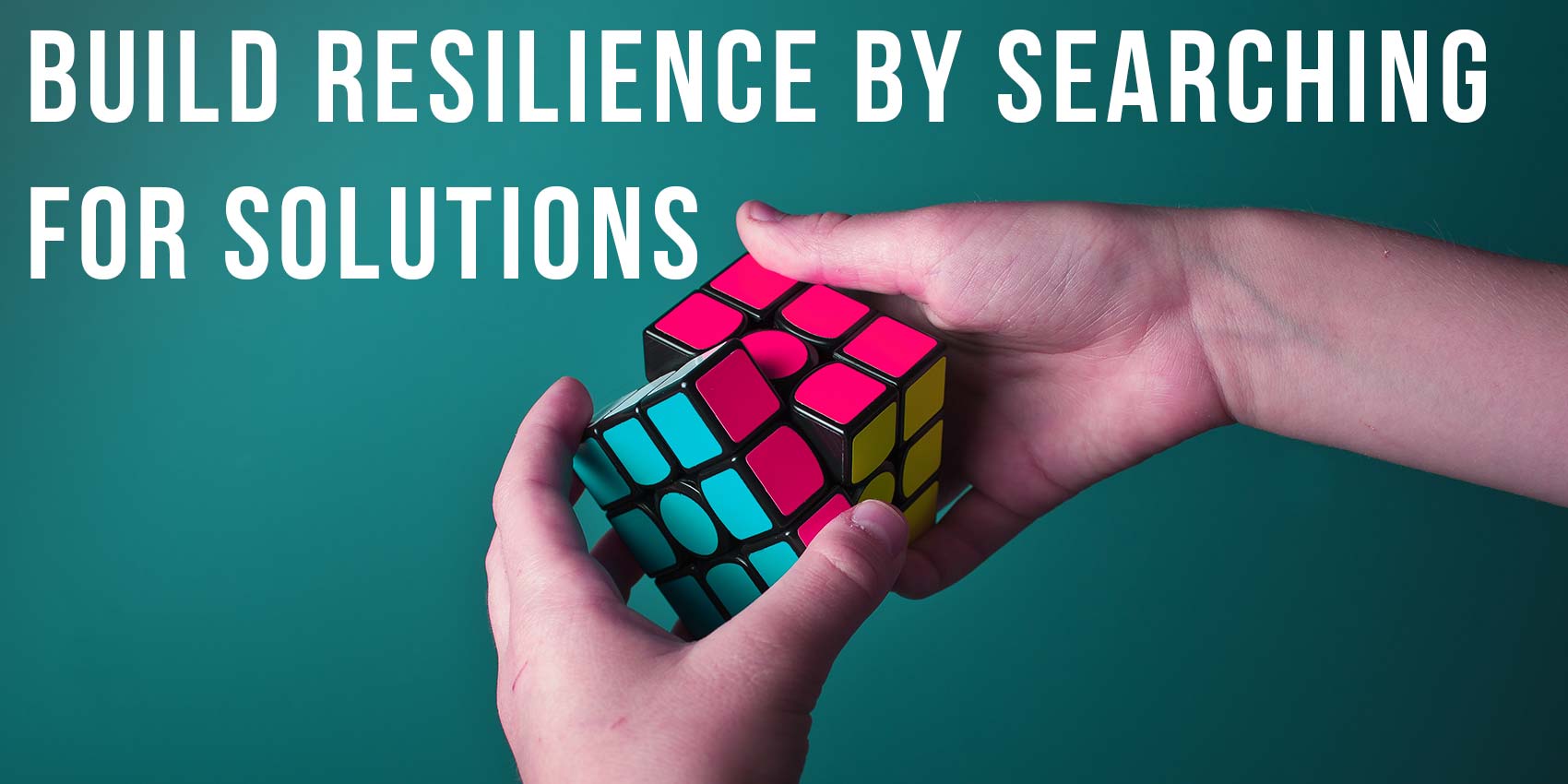23 Oct Build resilience by searching for solutions

Managing your emotions is key to resilience but so is finding solutions. You may hold back the tears when your friend posts a horrible, unflattering and totally embarrassing picture off you on her Snap story as being upset is natural, so go ahead and feel your emotions. Don’t deny them. But resilient people also search for a way to fix the problem. They are able to ask themselves, “What can I do that will improve this situation?”
For example, let’s say your parents tell you that you have to learn how to tango for their 30th wedding anniversary party. You are not allowed to go out until you have mastered a full 30 seconds of tangoing to their favorite song.
Step one: you manage your emotions. You want to scream and tell them how unfair they are being, and that’s natural! Your feelings are valid. But you know that screaming won’t help your situation. So you don’t argue and start searching for solutions.
Step two: you start searching for solutions. A person who doesn’t know how to problem solve, might just sit in his room for hours on end thinking about how impossible the task is. A person with a few more problem solving skills might watch a video or two to see what the tango is and then turn on some music to give it a try. It doesn’t go well – a tango is really complicated! – and he flops down on the bed.
You, however, with your great problem solving skills knows that problem sometimes require being creative and sometimes require breaking down the problem into manageable steps (in this case literally). So you decide that you are going to google the first four steps of a tango. You find them, memorize them and then practice them for five minutes so you can do them at warp speed. Then you watch the next four steps. You memorize those, practice and then put them together with the first four steps. At the end of the night, you have ten steps down and by the end of the week you can the tango with your teddy bear like Carlos Gavito (Think the Beyonce of tango dancers). You hate it the whole way, but you get it done and by the time the weekend comes, you are free to go out and tango on the town with your friends (ha ha ha ha, yeah, not a chance, but you do go out).
So resilience requires that a person understands how to solve problems. People with high resilience look at problems as challenges (even opportunities!) rather than road blocks. They are able to look at a large task and figure out how to break it down into manageable pieces. They look at a task that others feel might be impossible and decide, “What is possible?” or “What am I missing to make this work for me?” or “How can I think outside the box on this?”

DID YOU KNOW? Part of problem solving is recognizing when you might need to ask others for help. That’s a sign of resilience.
Now, what if your parents turn to you after weeks of practice and say, “Oh by the way, you won’t be tangoing to ‘O Sole Mio,’ we’ve changed the song to ‘Adios Muchachos’”? Even though you may then want to say “adios” to this whole thing, you don’t freak out. You download the song and change tune… literally.
That’s because problem solving, and thus resilience, requires you to be flexible. Being flexible means you don’t get stuck on meeting your task in one way or another, but you go with the flow and are willing to change direction if changing direction might open up the solution doors.




Post Question:
Do you like challenges or do you feel threatened by them? When someone gives you a hard task, what is the first thing you think to yourself?
Answer the post question here
What's being said